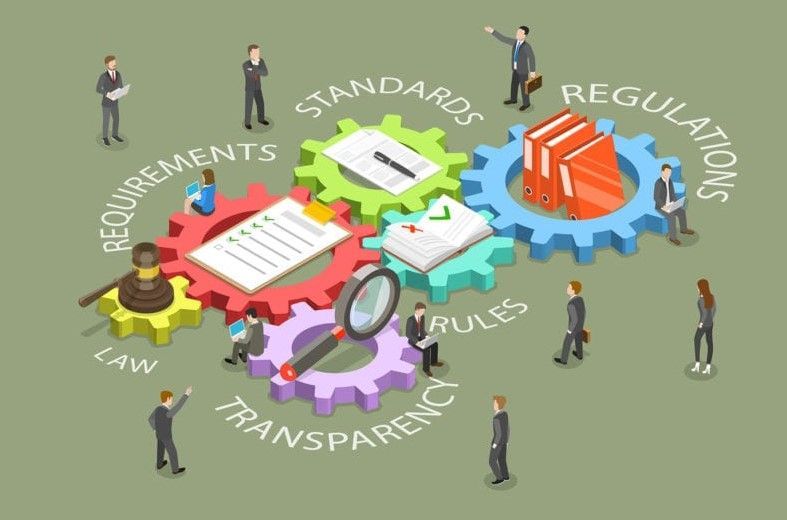Elephant in the Room or Elephant in the Corner?
August 14, 2025
Do you know-or suspect-that a single issue is holding back your company’s revenue growth? Your strategy seems to be on target, and you’ve achieved some solid success. Yet progress toward your vision for top-line growth has slowed or plateaued. Maybe it’s even backsliding.
You might know what the problem is or you might just sense that “something isn’t working.” In other words, you’re tiptoeing around an “elephant in the room” or standing idly by while an “elephant in the corner” weighs you down.
We all understand that an elephant in the room is a thorny, sometimes contentious issue everyone knows about but no one wants to talk about. It’s on everyone’s mind but not on anyone’s plate.
 An elephant in the corner is different.
People know about this issue, too. They even talk about it from time to time yet still take no action. Maybe it’s not really in the way or hasn’t been clearly defined. Maybe no one recognizes the true implications of resolving it or-even more difficult to determine-the implications of not
resolving it.
An elephant in the corner is different.
People know about this issue, too. They even talk about it from time to time yet still take no action. Maybe it’s not really in the way or hasn’t been clearly defined. Maybe no one recognizes the true implications of resolving it or-even more difficult to determine-the implications of not
resolving it.
Growth-minded companies must learn to go over, around, or through single-issue roadblocks to growth quickly and effectively. Unfortunately, most don’t know how. Such obstacles can be tricky: They don’t always present themselves as marketing or sales issues. Revenue-growth challenges can incubate in just about any area of your business-training, production, finances, strategy, personnel. In addition, each is unique to a company’s culture, business model, business environment, and other conditions.
The good news is that over the years we’ve developed a highly practical process to identify and tame both kinds of problem pachyderm in a way that helps our clients help themselves.
The key is our perspective that marketing is anything that enhances selling. That approach and our consistent process enable us to dig up and clean off revenue-blocking issues virtually no matter where they are or what they are. And it’s a good thing, too, because no two single-issue challenges we’ve been asked to solve have ever been the same.
One client, for example, asked us to take on an “elephant in the room.” This company’s salespeople were earning consistent commissions by selling $5,000 to $10,000 products and services with short sales cycles and high closing rates. They liked the approach they had developed and considered themselves successful. You can see why it was hard to dispute that success.
For several strategic and market-related reasons, however, the CEO’s vision for growth-and, of course, larger sales commissions-was to shift to selling much more sophisticated, six-figure services. That meant lower closing rates and longer sales cycles. Current sales activity was clearly not in alignment with the CEO’s desired direction.
Our process enabled both sides to appreciate the other’s goals and, especially for the sales force, the real potential for higher commissions. The process provided a practical path to realize the CEO’s vision without diminishing the enthusiasm of what in fact was a capable sales force. Our FOCIS® training supported the shift by upgrading the group’s consultative selling skills and developing a customized sales process designed for higher ticket services.
An “elephant in the corner” was the key to resolving another client’s single-issue challenge. We led a two-day retreat in which senior managers were to prioritize some 200 potentially good ideas and troublesome issues. Ultimately, we helped boil them down to four or five that promised significant impact with the right solution and implementation.
One problem was that significant annual growth in new revenue (that is, new sales) was being offset by the loss of current customers. In other words, sales were great but overall revenue growth was stagnant. What was happening? Management had an idea but didn’t entirely understand the implications of not tackling the cause head on.
This company was a major industry player that supplied services to thousands of franchisee locations across the US and Canada. Our client’s customers were individual owners or groups that owned anywhere from one location to several hundred.
The source of the problem turned out to be a classic “elephant in the corner”-an issue seemingly unrelated to sales and marketing that hadn’t received much attention.
Our client’s franchisee contracts were voided whenever the ownership of a location changed. That meant competitors who knew of the sale first could swoop in and sign up the new owners. And they did. Competitors seemed to be getting the business simply because they were vendors the new owner was already using. Our client’s pricing and service were not in question.
The elephant in the corner was that our client was at a competitive disadvantage. Management had no way of knowing when a sale took place. (An out-of-date contract-tracking process also contributed to delays in efficiently identifying voided contracts.)
The challenge was to turn that disadvantage into an advantage by developing a way to find out when a sale took place before competitors did. Management ultimately made achieving that competitive advantage its #1 goal for the near term because it would have the most impact. We then facilitated brainstorming to determine how best to do that.
We’ve helped tame other elephants, too. Clients and their challenges include:
- A company that created an effective direct-mail program but was not sure what the actual sales process should be to handle the responses that would soon be coming in.
- A firm that needed to improve the ROI on webinars, seminars, and social activities put on for their clients
- A business that needed guidance in debriefing from a major successful project that involved multiple alliance partners. What lessons could be learned?
- Another client that saw revenue increase after its sales team completed our FOCIS® consultative selling training but then realized a previously low-profile operational challenge kept them from meeting demand
- A company struggling to differentiate itself from growing competition didn’t know how to determine which market leadership discipline they should embrace
- One company was uncertain about how to leverage the value of past prospects and inactive customers
- Another was struggling to decide whether the best channel for going to market with a new product was to employ direct salespeople or to use independent representatives.
Our straightforward approach uses basic research and information gathering, expert facilitation of internal discussions, and the development of documentation, insights, and action steps for moving forward . Our neutral role, business experience, and problem-solving capabilities enable us to facilitate and mediate in a way that in-house leaders cannot. For example, the valuable insight and inspiration CEOs or senior managers should contribute are largely lost if they must also focus on running the discussions. They need to participate fully.
Is your revenue growth stalled by a single issue? Do you know that your team members-and perhaps you-are ignoring an elephant in the room? Do you suspect there’s an elephant in the corner? Either way, please give us a call at 847-446-0008 or e-mail us at pkrone@productivestrategies.com.
We can help you better understand what you’re up against, what it might mean for your company, and, if you want us to, tame the beast.
Phil Krone is president of Productive Strategies, Inc., a marketing and management consulting firm specializing in consultative sales training, lead generation and appointment setting, and marketing and marketing communications. Phil can be reached at 847-446-0008 and pkrone@productivestrategies.com.
The post Elephant in the Room or Elephant in the Corner? appeared first on Productive Strategies, Inc..










